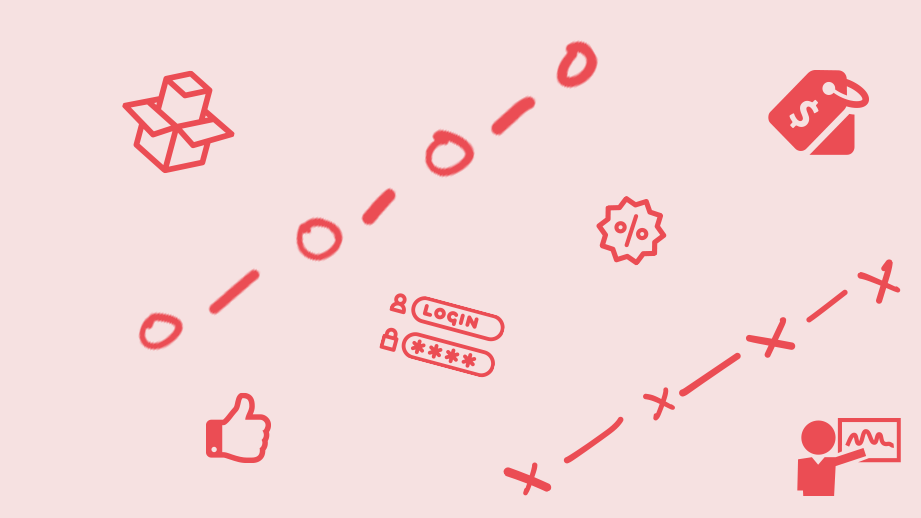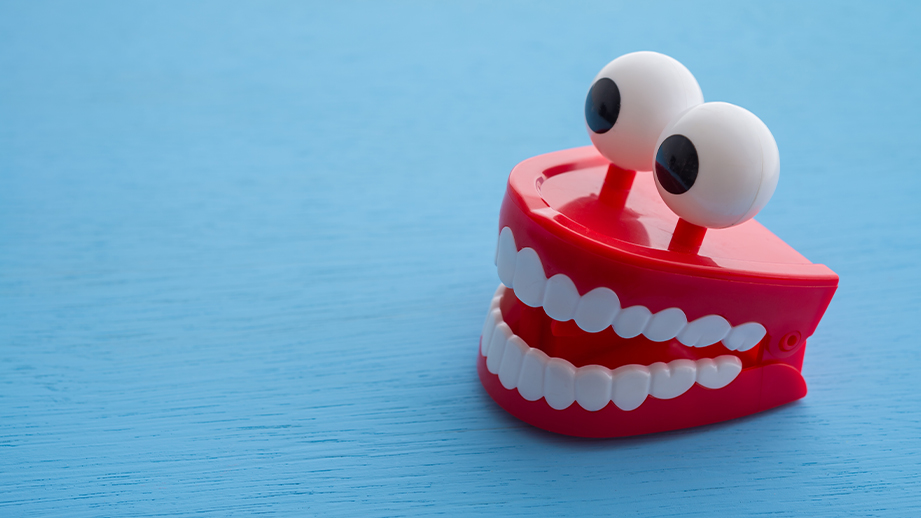[Video] A Content Guideline to The 5 Stages of The Buyer's Journey
When it comes to purchasing a product or service, more often than not, your customer will begin a journey. This journey is commonly known as the buyer’s journey or customer lifecycle. It begins from the moment they realise they have a particular problem to the point where they purchase or discover a solution to the problem and beyond.
Throughout the duration of this journey, it is down to you, as the marketer or business owner, to segment your prospects (using the likes of demographic segmentation, geographic segmentation, psychographic segmentation or behavioural segmentation) and provide them with content that is both appropriate and relevant based on their stage in this journey. This helps to create a more streamlined experience for both brand and consumer and helps your customer move more smoothly through the process, and closer to making that purchase.
It’s important to note that the buyer’s journey is not a one-size-fits-all process. Each customer journey will vary from brand to brand, but typically this is made up of five stages; Awareness, Consideration, Retention, Decision and Advocacy.
In this video, we’ll go through each one of these stages, one by one, and learn more about the most effective ways to approach your customers throughout each phase.
So just click play above and let’s get started! ▶️
_
In this video, I’m going to tell you everything you need to know about the 5 stages of the buyer’s journey, and help you to deliver the right content to your target audience at each stage of this journey. I’m Emma Mullan from Hurree, the platform that makes targeting users easier through automated segmentation.
Let’s kick off today’s video by answering the following question… What exactly is the buyer’s journey or, as it is also known, the customer lifecycle?
When it comes to purchasing a product or service, more often than not, your customer will begin a journey. This journey starts from the moment they realise they have a particular problem to the point where they purchase or discover a solution to the problem and beyond.
Ok, there are certain exceptions to the rules… you know, those times when you’re standing in the queue at the filling station, paying for your fuel, and you just can’t resist picking up that cheeky chocolate bar to keep you going on the commute home… despite the fact that you’re meant to be on the “new year, new you” diet…
(We’ve all been there, don’t feel bad about it)
You didn’t exactly plan that purchase and there was no real journey... so, it’s more of a spur of the moment, impulse buy.
But for many products and services, there are a number of stages your customer will go through before the actual purchase. This is especially true in most Business-toBusiness (known as B2B) purchasing decisions and for the bigger ticketed items such as a new car, camera or house. Because unless you're lucky enough to be part of the Kardashian family, then these are not your regular impulse buys.
At this point, I want to make it clear that the buyer’s journey is not a one-size-fits-all process. Each customer journey will vary from brand to brand, but typically this journey is made up of five stages. Here are the 5 stages of the buyer's journey:
- Awareness
- Consideration
- Decision
- Retention
- Advocacy
So let’s go through each one of these stages, one by one, and learn more about how you, as a business owner or marketer, should approach your customers throughout each phase.
Stage One - Awareness
This very first stage of the buyer’s journey is all about education. At this point, potential customers are likely to have no idea who you are and what you do. So it’s up to you to get in front of your target audience and create an association between your brand and a current or future need.
Typically, at this stage, you have two types of customer:
The first are those who know they have a particular problem already but do not yet know the solution. Your job here is to show your prospect that you understand their problem and can provide relevant information, and resources, that help your target audience to solve it.
The second is those who do not yet know they have a problem. So in order to engage this particular buyer, you should focus your attention on creating content that highlights the issues they could face as a result of not buying your product or service.
What you do not want to do at this stage is to sell! I get that this might sound strange, considering that selling your product or service is ultimately the end goal. But just sit tight; that stage will come, but it is not right now. There are very few customers who will buy a product they have never heard of, from a brand they don’t know, after the very first touchpoint. Putting decision-stage ads and content in front of people that aren’t yet ready to see them is a mistake that so many brands make. Instead, you should be laying the foundations of product knowledge prior to the ‘hard-sell’, this will ensure that when the time comes to close the deal things run a lot smoother.
During the awareness stage, your potential buyer might be asking themselves a number of questions. In fact, 72% of buying decisions begin on Google so, the chances are, they are typing these questions directly into Google searching for help. So what you want to do is create content that ranks highly for these particular keywords. Of course, the questions your target audience asks will vary depending on the product or service. So it’s important that you do your research and learn as much as you can about your target audience and then you will be able to accurately predict the types of questions they are likely to ask.
In terms of the content you need to be producing at the awareness stage, there are loads of options. Think along the lines of ‘How-To’ blog posts, E-books, Videos, White-papers, Industry Reports, Podcasts, Infographics and advertising on Social Media and Google. Just be sure to add a call to action as part of these pieces of content. You want your prospect to be able to take action as a result of coming across any of these. It’s also a good idea to keep some of your top content gated, that way you can get an email address in exchange for access to the material.
Stage Two) Consideration
This second stage is all about deepening the association made between your brand and the customer’s need during the awareness stage.
After carrying out all the preliminary research, your customer has decided that they need to make a purchase in order to solve their problem. And thanks to your cleverly targeted awareness stage content, they have come across your brand. You’ve done a great job so far in capturing their interest, and if you’ve managed to get some form of contact information, be it an email address or phone number, now is the time to reach out.
During the consideration stage, your prospect is likely to be sizing your brand up against its competitors, so you need to highlight exactly what makes you better than the rest. Give them some content that will push you closer to making that sale. Things like case studies, pricing guides, product demos, webinars, and FAQs. Just make sure that you are as helpful and friendly as possible. So don’t lose their business over something small, such as taking too long to respond to a query.
Stage Three) Decision
By this stage, your customer should have all the information they require in order to make an informed decision. They have narrowed down their options to a select few possibilities, so they are almost ready to go ahead with the purchase. So what’s holding them back?
Your customer wants to know which option offers the best product or service, with the best features, and at the best value for money.
They just need that extra bit of reassurance to convince them that they are making the right decision, so content like customer reviews play a huge part in the decision stage. Spiceworks discovered that 97% of customers rely on recommendations and ratings during the buying cycle. So make it easy for your prospect to find! Give your prospect the proof that your product or service does exactly what you say it will by featuring testimonials and case studies from current customers on your website. And if that’s not solid enough evidence for them, then offer them a free trial. If your product is a pretty complex tool, specifically aimed at B2B, then a live demo is a great way to speak to the prospect face-to-face. This will help you to build a solid relationship and answer any questions they might have as you take them on a walk-through of your prized product.
Ultimately, your job is to make the sales process as easy as possible for each and every customer.
Stage 4) Retention
By this stage, you’ve got the sale in the bag. But before you start to get comfortable, I have to tell you, the buyer’s journey is not over yet. Now is the time to start building that bond between your brand and your customer, and helping them to get the most value and satisfaction out of their purchase from you.
It’s a widely known fact that acquiring a new customer costs your business way more than retaining a current one. Loyal, returning customers are where the profits are at, and they will add so much more value to your business than one-off purchases. It’s all about quality over quantity.
You’ve got their trust already, so you just need to work on maintaining it. Offer customer support with follow-up calls and emails to make sure they are happy with their purchase. This is also a great opportunity to gather feedback and help you deal with any issues that may have come up, giving you the chance to rectify the situation before they take to Facebook or other forums to post a negative review, and tarnish your hard-earned reputation online.
If your product requires some setup, then onboarding emails, push notifications or in-app messages are vital as part of the retention stage to help them get to grips with how everything works.
Your customer will also appreciate any relevant blog posts or videos that apply to their purchase. And don’t forget to use this opportunity to up-sell any add-on products that you might recommend to go along with what they have already bought.
Offering your customers something in return for their business is a great way to encourage retention. So any discounts, loyalty schemes or even a little birthday card every year will go a long way and show how much you value them. This needs to be a two-way relationship.
Stage 5) Advocacy
Getting your customer to the advocacy stage is the result of providing a great customer experience and nurturing them throughout every stage of the buyer’s journey. And of course, you need to make sure that the product or service they purchased is high quality too! If you’ve succeeded in this then you’ll now have loyal, satisfied customers who will continue to use your product, purchase from your company or renew their subscription with your service on a monthly or yearly basis.
And what happens when someone is passionate about a product or service? They talk! Word-of-mouth (WOM) is one of the most powerful and influential forms of marketing out there. These customers are ready and willing to be active advocates for your brand, you just sometimes have to nudge them in the right direction.
As with everything throughout the buyer’s journey, what you can do varies widely depending on your business. But if you can, why not set up some sort of referral scheme and simply ask your customers to spread the positive word of your brand and, in return, you’ll reward them with a discount or freebie! It’s a win-win situation for both parties.
Making your loyal customers feel valued is a great way to turn them into advocates, and what better way to do this than by involving them in your company? Make them feel exclusive with priority access to new product releases and the opportunity to test and give feedback.
Tailoring your marketing content based on the buyer’s journey makes everything flow so much smoother. Every customer has different needs and wants depending on their lifecycle stage, so it makes sense that your content caters to each buyer persona throughout each stage of the journey. Getting your buyer’s journey and the content required mapped out and created accordingly might seem like a lot of work to undertake to begin with, but I can promise you that your business will reap the benefits.
Go from Beginner to Market Segmentation BOSS with your very own FREE guide:
The ABCs of Market Segmentation 💌 Don't hesitate to get in touch directly via emma@hurree.co with any of your questions or comments you may have!
Share this
You May Also Like
These Related Stories

How to Delight Your Customers Throughout The Buyer's Journey

A Content Framework: The Five Stages of The Buyer's Journey

